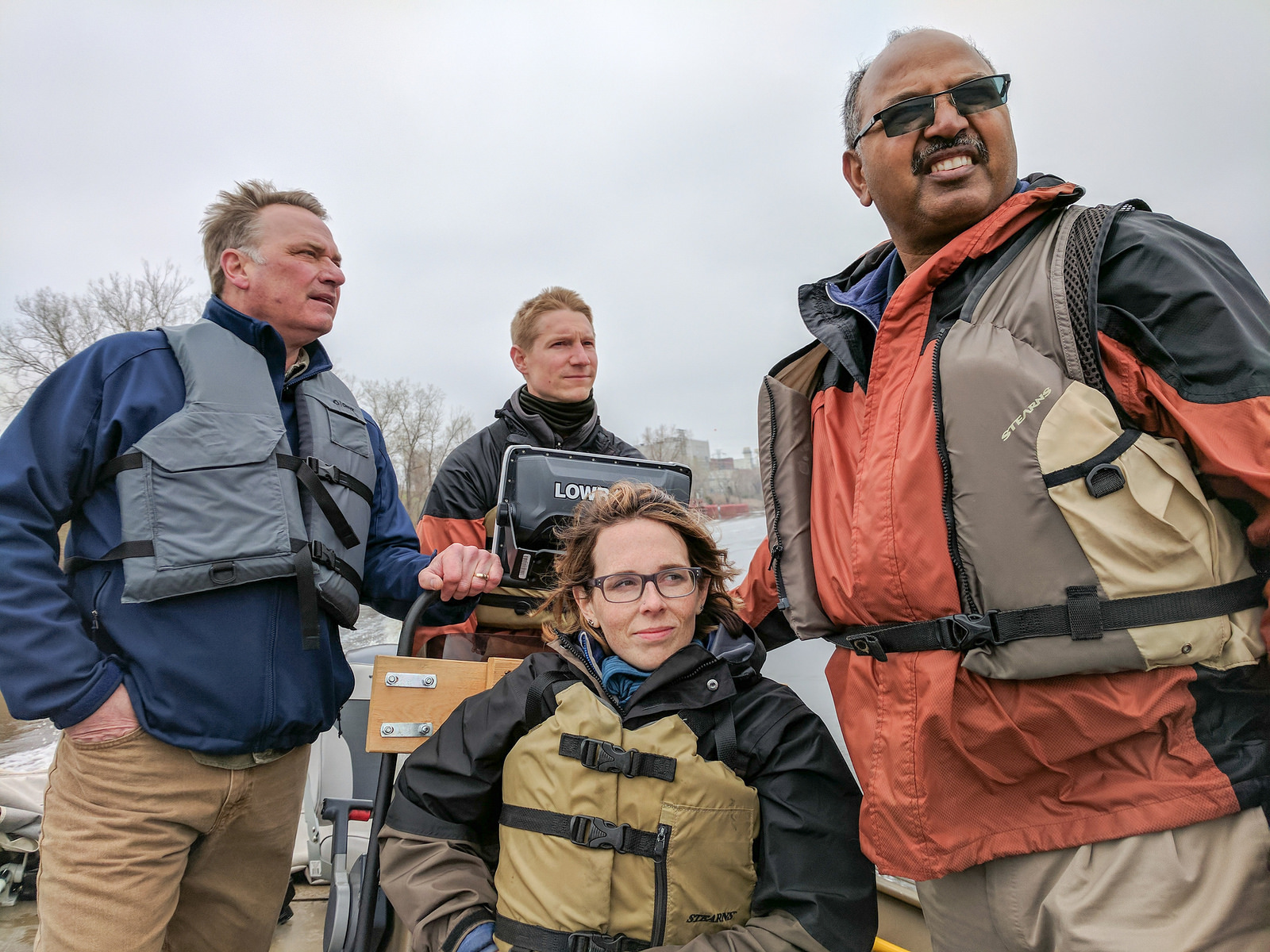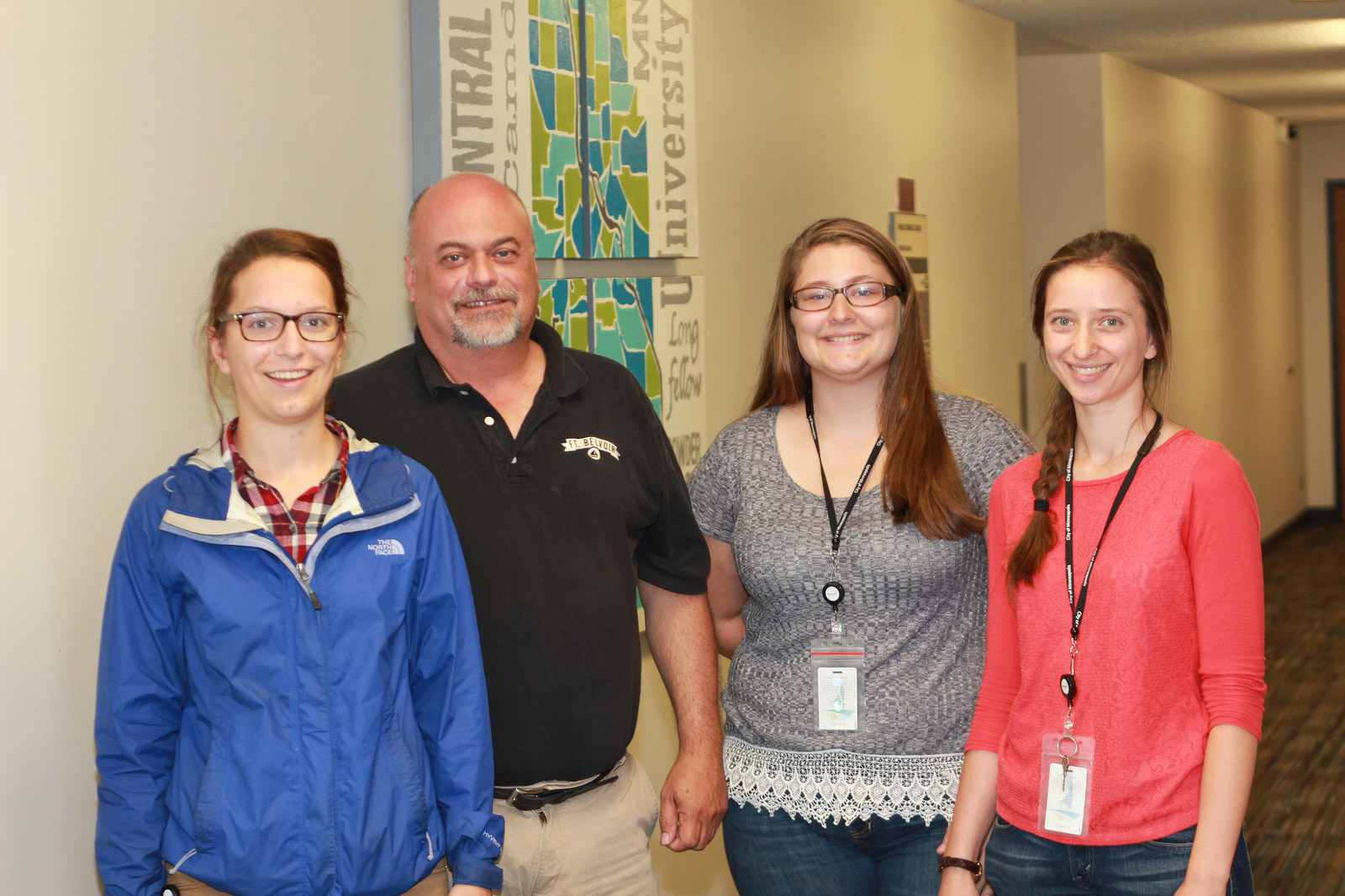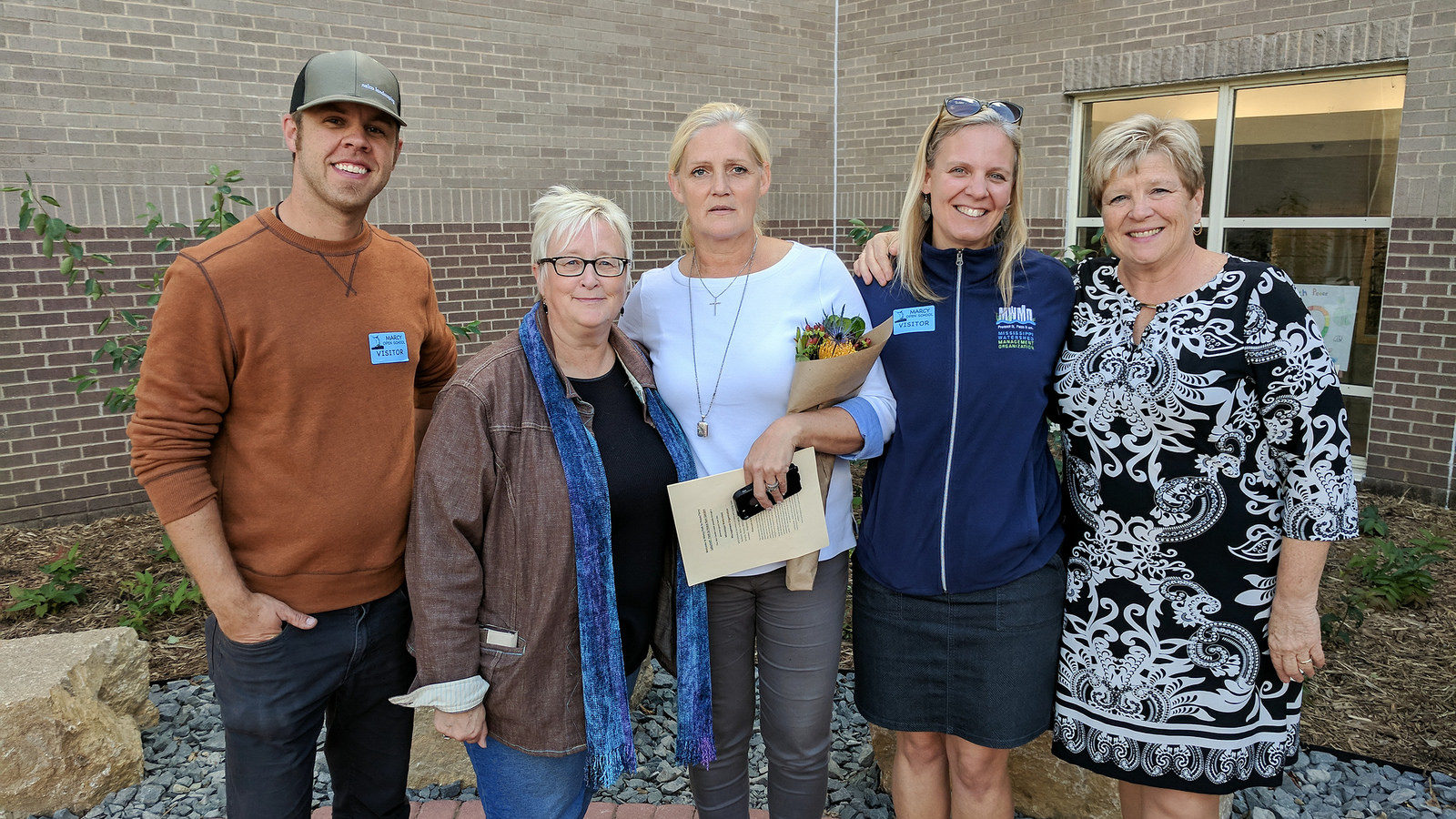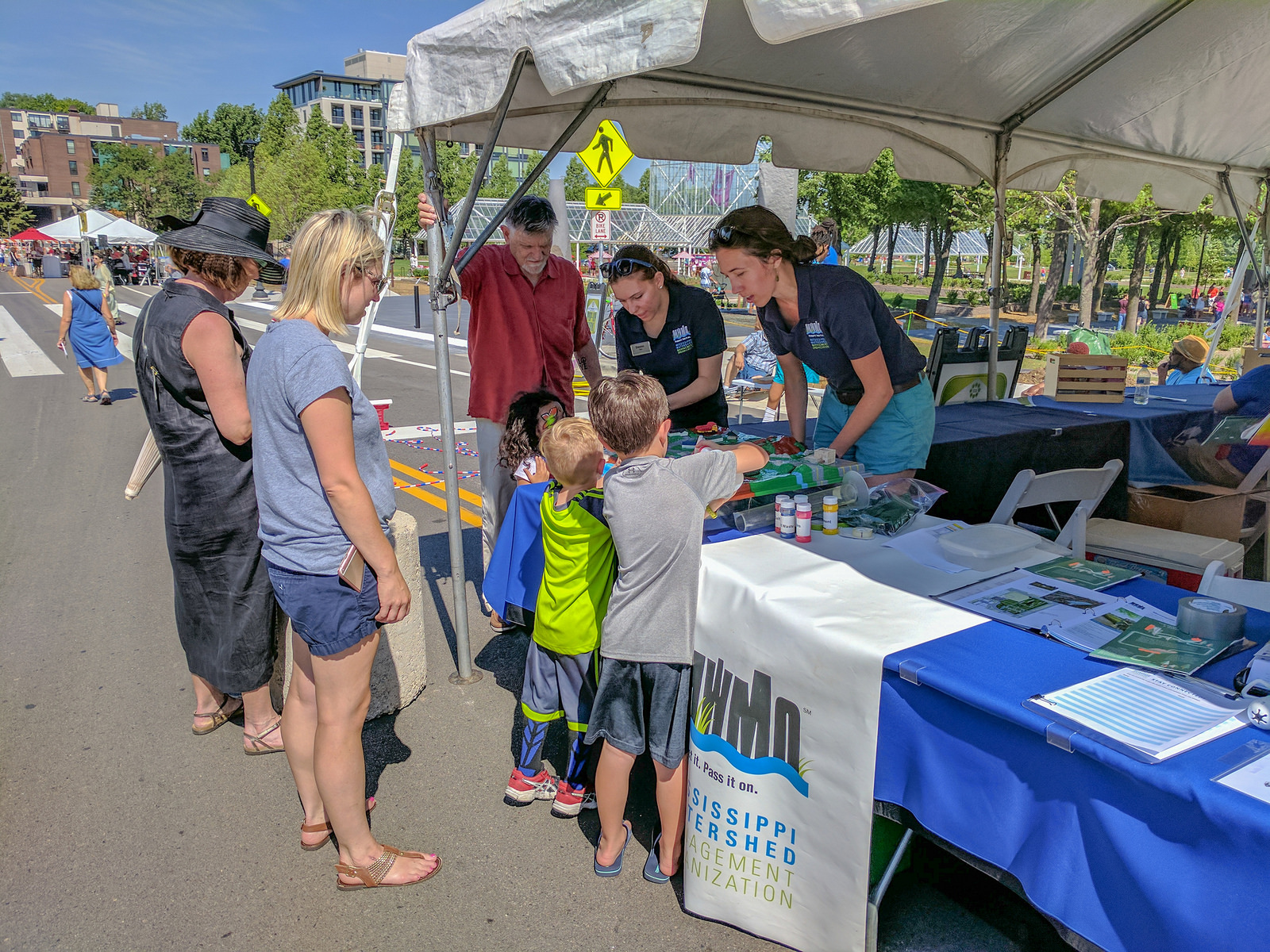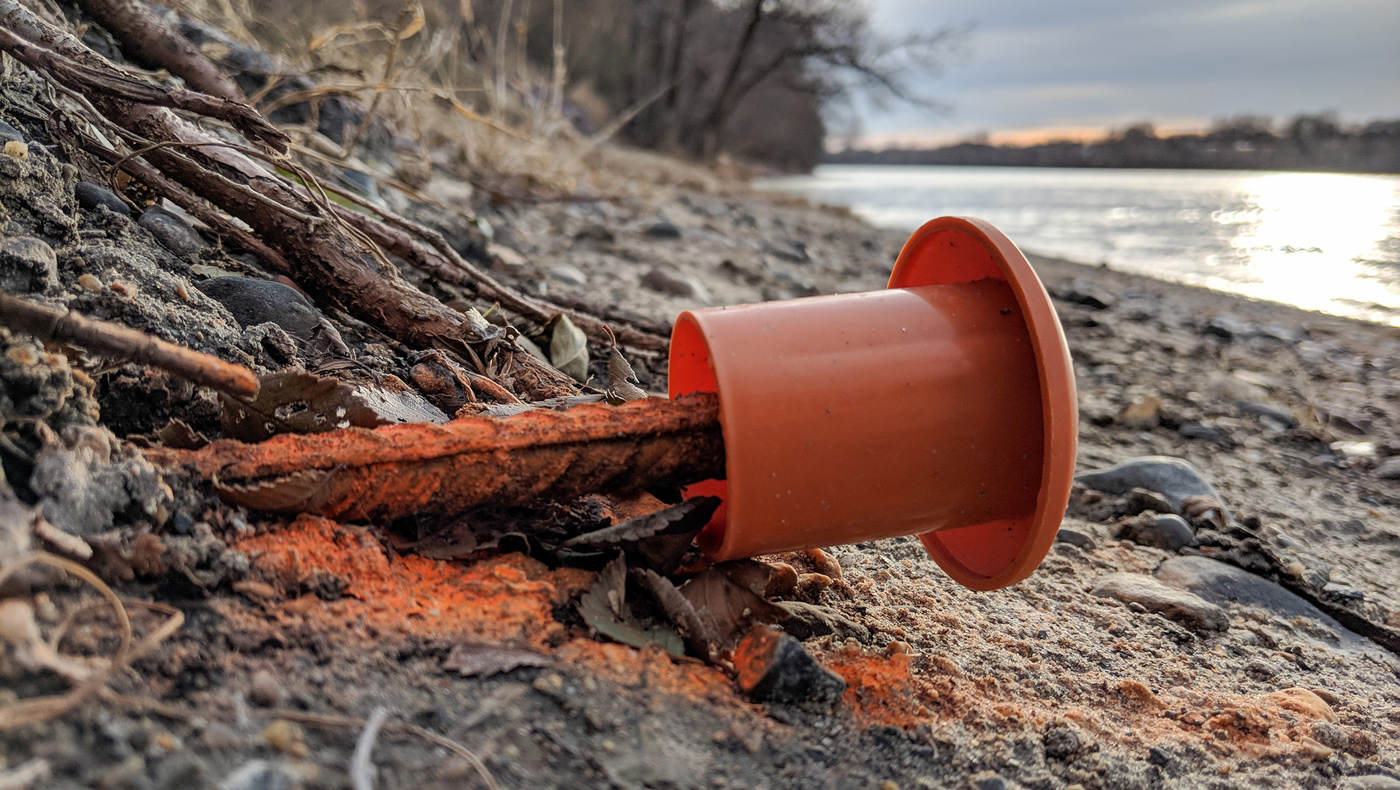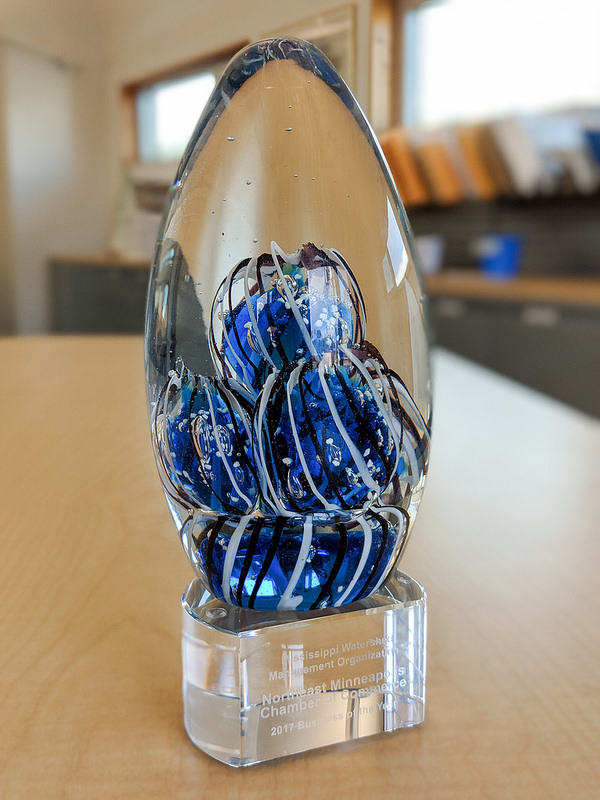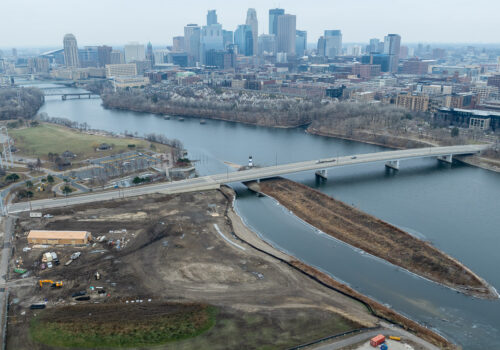News / December 28, 2017
Great partnerships made 2017 a successful year for the MWMO


As we consider our accomplishments over the past year, it’s always tempting to think in terms of numbers: how many big projects were completed, how many ribbon-cuttings or ground-breakings were held, or how many new awards are now gathering dust on our shelf.
This kind of simple accounting never tells the full story, however. Because here at the MWMO, what really drives our work is partnerships, and the trust and synergy we’ve built with our many public, private and nonprofit partners over the years. Every project we do requires careful coordination and input from multiple stakeholders — often with competing interests. Such is the nature of managing water resources in an urban environment.
Take our Towerside project, for example. From a technical standpoint, it’s basically a large stormwater reuse system. The backstory, however, is much more interesting. It involves years of planning, community meetings, design workshops and negotiations, along with reams of paperwork. A large coalition formed around the project, and in the end, it brought a group of developers together to create the state’s first true district stormwater system, collectively managed and operated in an urban setting.
All of our work at the MWMO depends on such partnerships. And so, as 2017 draws to a close, we’d like to recognize some of our great partners who helped make the year a success.
Supporting Minneapolis Parks
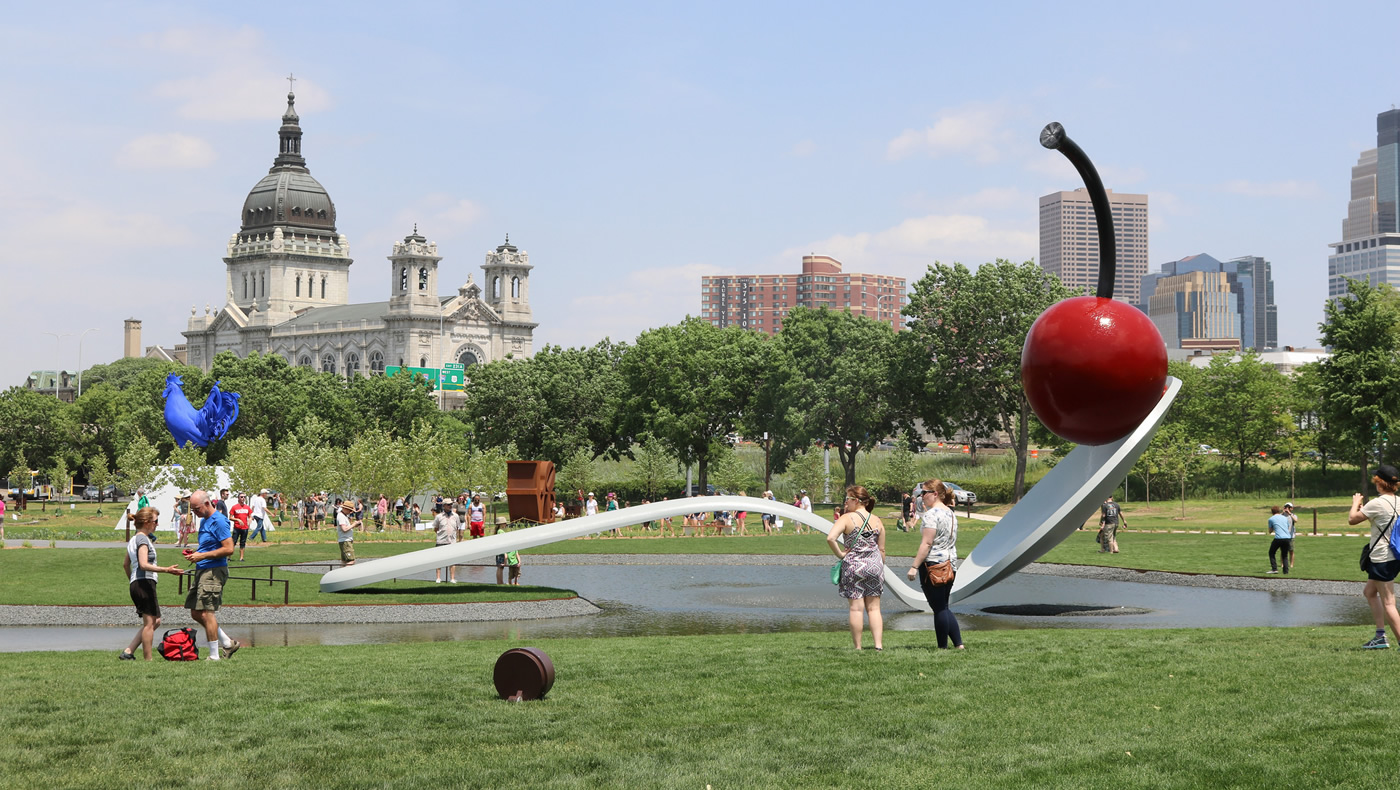
Arguably our most visible project of 2017 was the redesigned Minneapolis Sculpture Garden. I say visible, although our contribution to the project is now buried underground. The Minneapolis Park and Recreation Board and the Walker Art Center led the reconstruction of this iconic public art space, which we supported with a $1.5 million grant for water re-use and stormwater management.
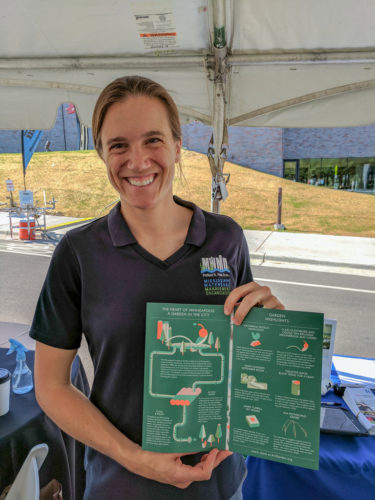
From the beginning, MPRB and the Walker were committed to making the sculpture garden a more environmentally sustainable space, and we were proud to support them in this endeavor. In addition to saving potable water and reducing polluted runoff at the sculpture garden, the project is significant for the education and outreach opportunities it presents. Millions of visitors will have an opportunity to learn how water from the Spoonbridge and Cherry sculpture is being captured and reused to water the landscape, along with the benefits of the enhanced turf and native vegetation that were added to the site.
The Minneapolis Park and Recreation Board will continue to be a major partner for us as we move into 2018. We’re supporting them on several major projects, including the restoration of Hall’s Island, the new Water Works riverfront park, and the proposed development at Upper Harbor Terminal. The Minneapolis Parks Foundation is also a key partner in these important efforts, which will help transform the Minneapolis riverfront from a degraded industrial zone into an accessible and ecologically sound natural area.
We’re also working closely with MPRB to co-develop their Ecological System Plan, which will set out a vision for making parks and public lands friendlier to the environment. The park board has always been a key partner for us, and it’s exciting to see so many great projects underway.
Innovation at Towerside
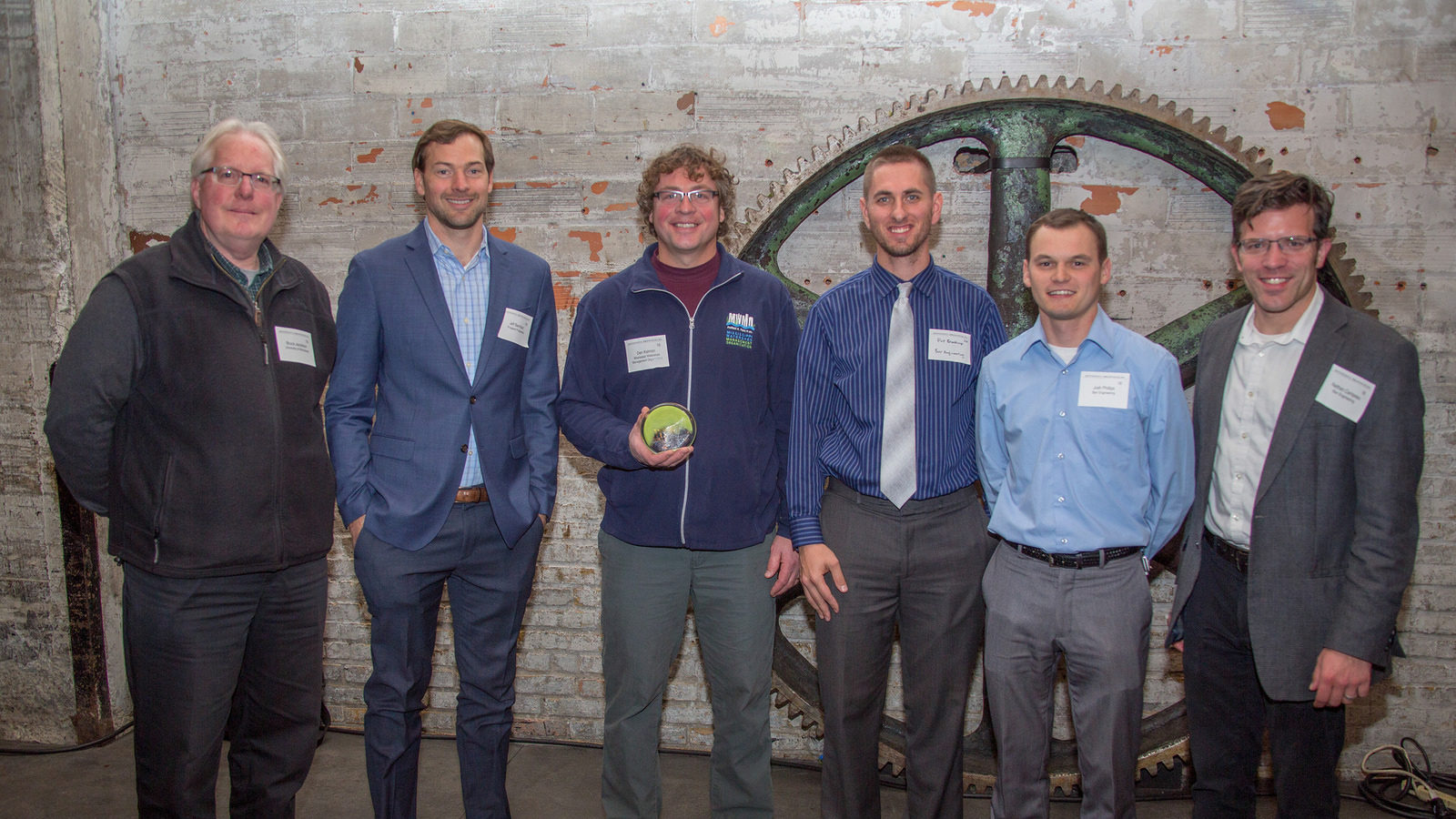
Of all of our recent projects, none involved a larger and more diverse group of partners than the Towerside District Stormwater System. For this project, the MWMO and its partners were proud to receive a nomination for a Minnesota Brownfields ReScape Award. While we didn’t ultimately take home the big prize, our nomination in the “Environmental Impact” category still stands as a testament to the value the system will provide for the community.
Rather than spell out a list of all the partners involved in this complex project, we would encourage you to watch our video about the project, showcasing why the district approach to managing stormwater represents a step forward in urban design. We’ve also released a separate video interview with Dick Gilyard, a community leader who was integral to the success of the project.
Old Bassett Creek Tunnel
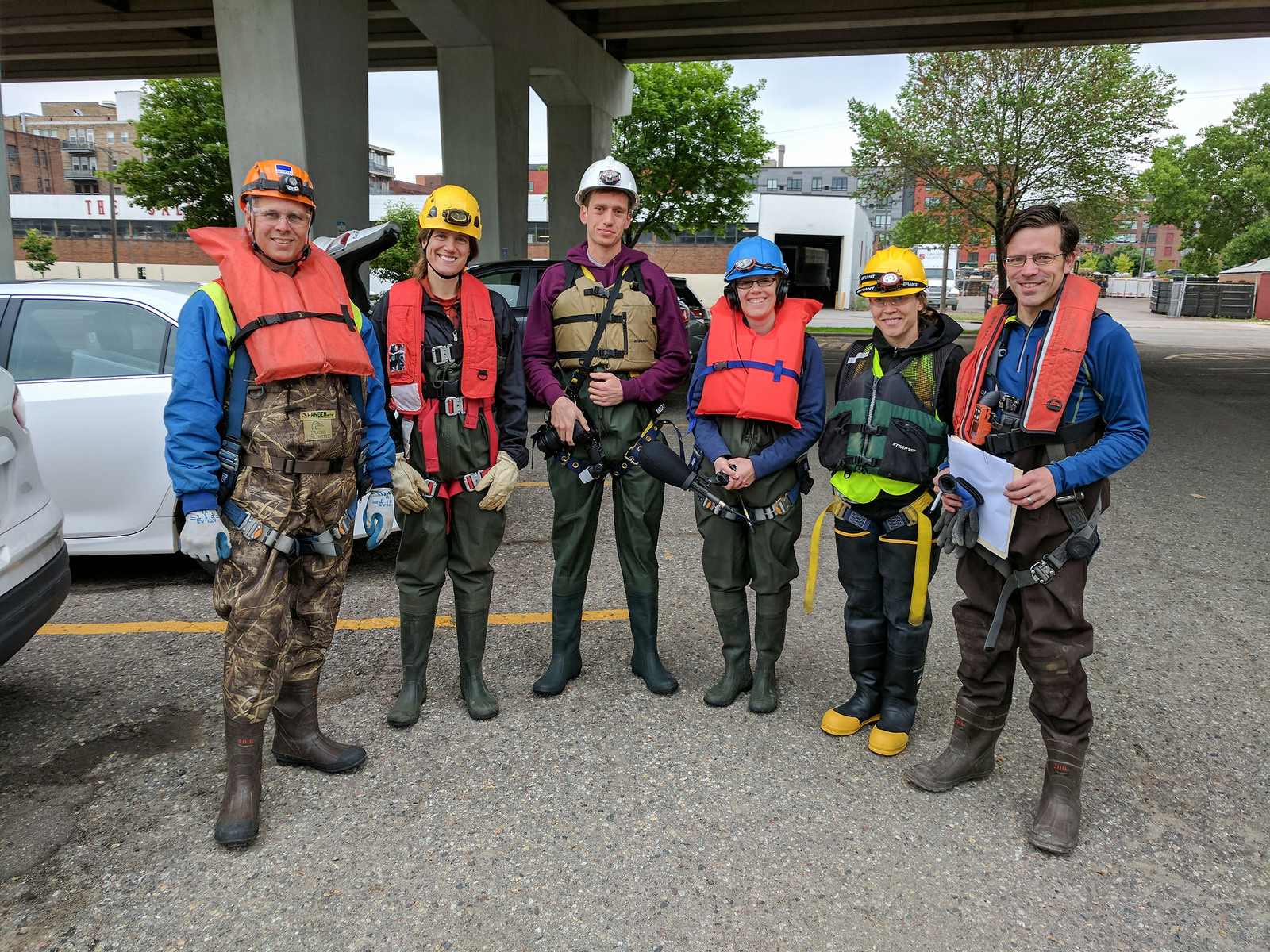
In May, MWMO staff walked the Old Bassett Creek Tunnel with City of Minneapolis staff and a team from Barr Engineering Co.. The group’s task was to assess the types and amounts of pollutants that had accumulated inside the tunnel.
Our partnership with the city is an important one, considering that they own and maintain all of the stormwater infrastructure in the majority of our watershed. The city even agreed to let us invite a reporter along for the journey — an experience chronicled in this Minnesota Public Radio News story. We’re now working together with the city to devise a strategy to remove the pollutants from the tunnel.
As a side note, we also want to recognize the reporter, Elizabeth Dunbar, and the photographer, Evan Frost — both of whom agreed to take confined-space entry training in order to enter the tunnel and report the story.
Downtown Runoff Study
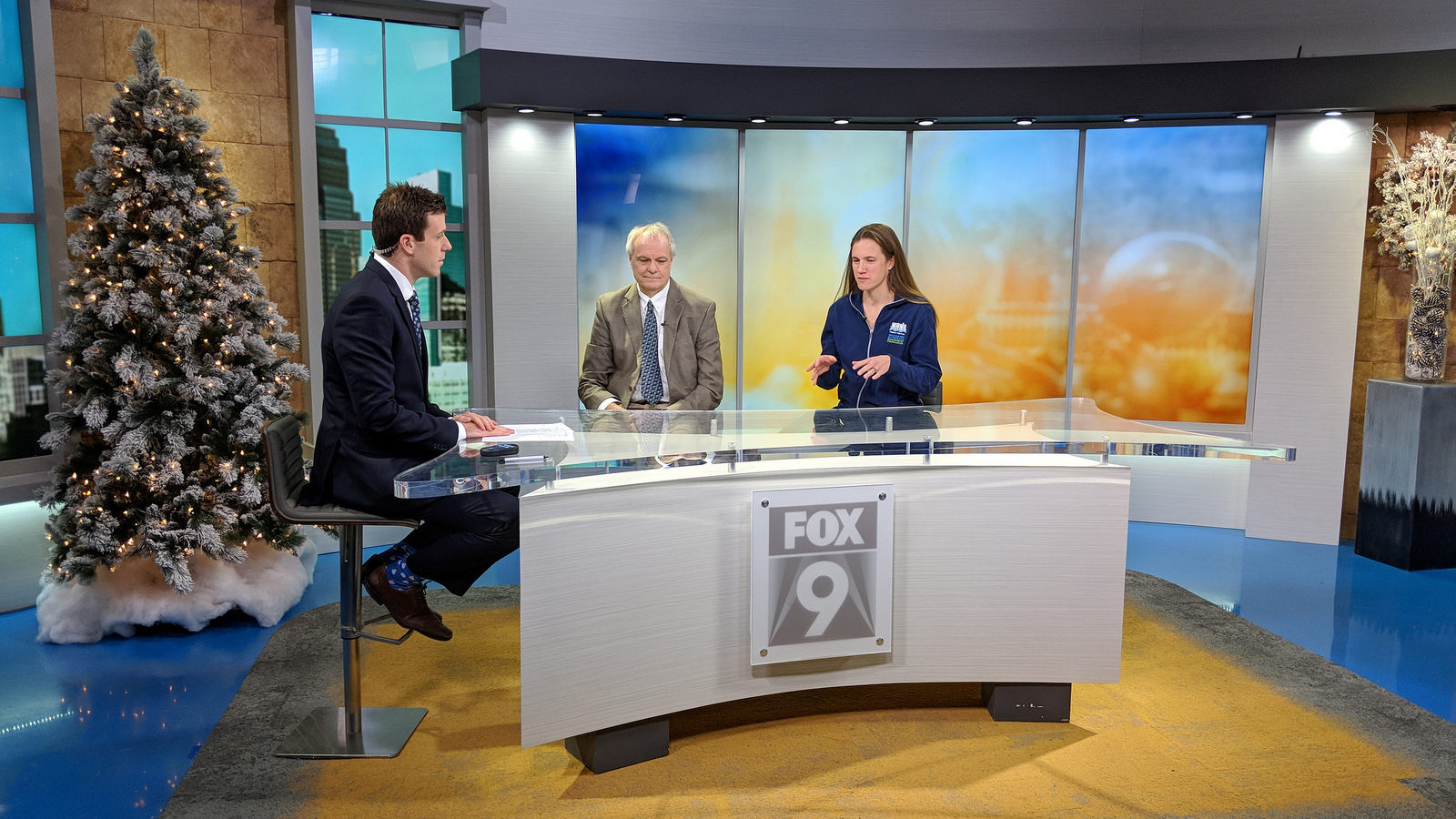
The MWMO has teamed up with the University of Minnesota to find out which types of surfaces in downtown Minneapolis generate the most polluted stormwater runoff. The study, a first of its kind in the Twin Cities, will help us build a more accurate water quality model so that we can better target our pollution-prevention efforts. The research team comprises members of the MWMO’s water quality monitoring team along with a group of graduate students led by Professor Bruce Wilson of the University’s Department of Bioproducts and Biosystems Engineering.
The team ran a series of rain simulation tests over the summer and again in the fall. FOX 9 meteorologist Cody Matz invited Wilson and MWMO Projects and Outreach Director Stephanie Johnson to talk about the study during a recent morning news segment; the Downtown Journal also wrote about the project earlier this fall. A third series of rain simulation tests is planned for spring 2018.
EcoVillage Apartments
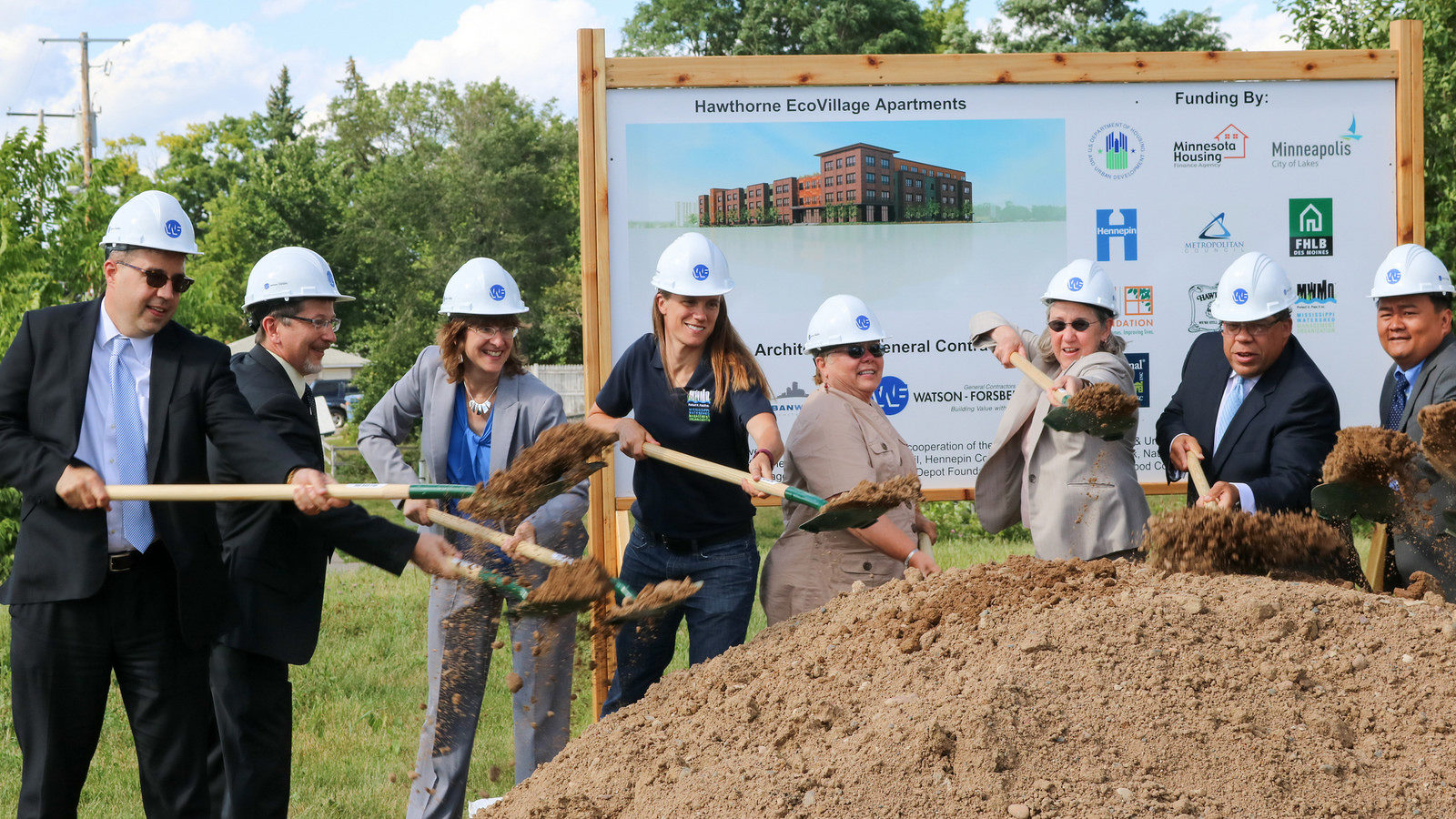
Another great story to come out of 2017 was the opening of EcoVillage Apartments, an affordable housing complex in North Minneapolis designed as a model of sustainable living. Our contribution to the project was to fund a stormwater treatment train on the site, but the larger story behind the project, which is captured in this blog post, is inspiring and worth a read.
Many years of hard work and planning went into the development now known as Hawthorne EcoVillage. Project for Pride in Living, the Hawthorne Neighborhood Council, and the City of Minneapolis deserve much credit for transforming a once-blighted area of the city into a desirable, green neighborhood. The fact that this was one of the most-visited project pages on our website this year is a testament to how excited many people want to rent an apartment here.
Stewardship Fund Grants

Some of our most creative and fun partnerships grow out of our Stewardship Fund Grants program, and this year was no exception. Rebecca Krueger, an artist in Columbia Heights, solved a trash problem in her community by building an impressive coalition that included city staff, the Columbia Heights Library, the HeightsNEXT civic group, local poet and activist Cole W. Williams, the Minnesota Department of Transportation and others. An MWMO Mini Grant helped fund the project, which you can read about on our blog.
Communities of faith are quickly becoming some of our most enthusiastic allies in the fight to protect water quality, and several faith-based groups stepped up in 2017 with some great Stewardship Fund projects of their own. Mill City Church is partnering with Urban Ecosystems to design a new stormwater-absorbing landscape at the church’s Northeast Minneapolis office space. An MWMO Planning Grant is helping fund the project, which utilized virtual reality technology to engage their church members and solicit feedback on the design. Meanwhile, members of Judson Memorial Baptist Church used an MWMO Mini Grant to fund a series of rain gardens at their south Minneapolis church and educated church members and the community about the importance of reducing polluted runoff.
Art and Community Partners
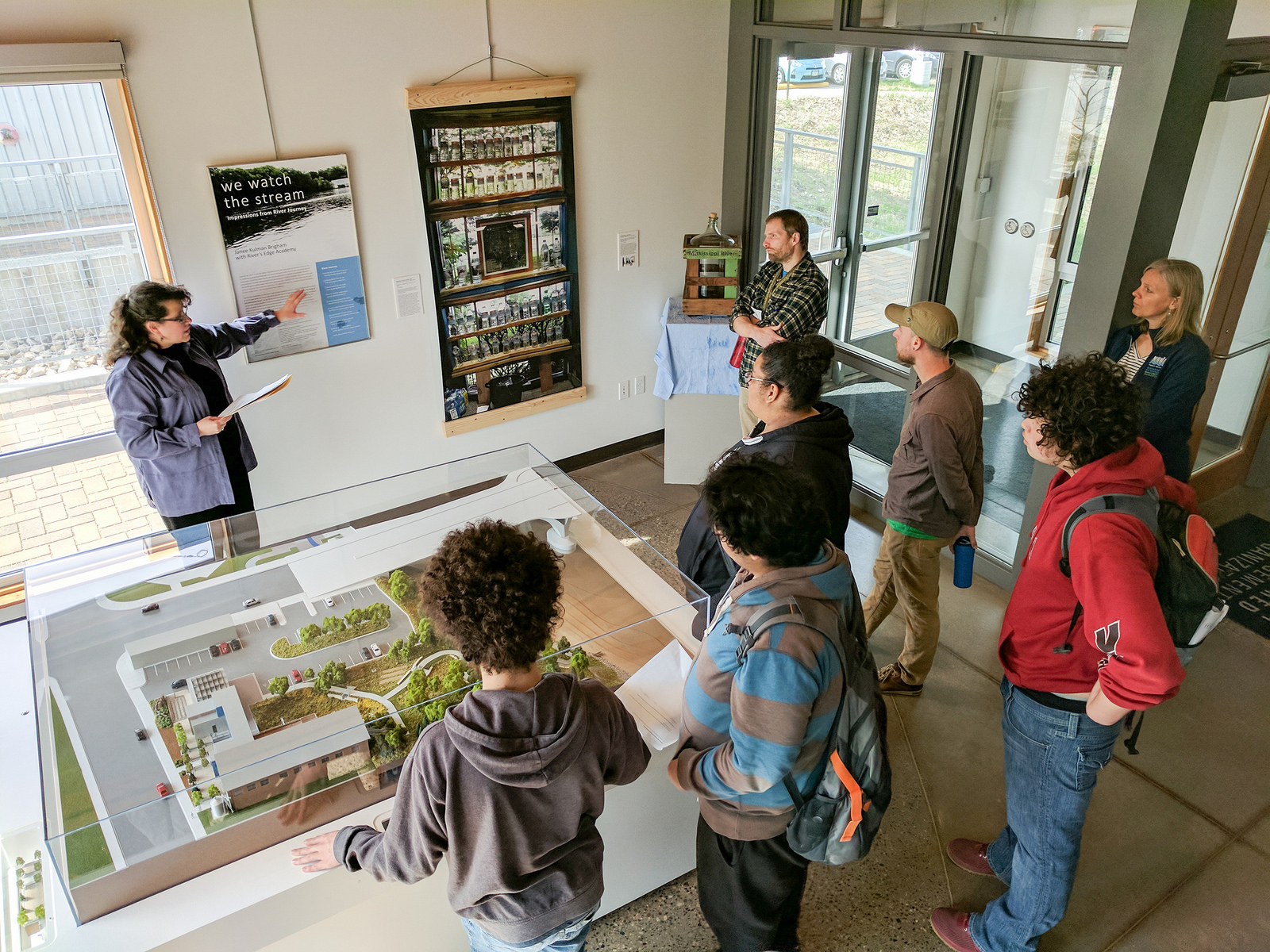
We were very fortunate this year to host several interpretive exhibits created by local artists and environmental advocates. Jonee Kulman Brigham brought her We Watch the Stream: Impressions from River Journey exhibit to our Stormwater Park and Learning Center in April. High school students and staff from River’s Edge Academy collaborated with Brigham to explore the ways that they and their school are connected with the Mississippi River. Brigham then stitched together their work to create a one-of-a-kind art experience.
Sculptor James Brenner also returned to the MWMO this year with an exhibition of works from his Hydro-Illuminata project. The exhibition features iron works, photos and video documenting the public water and fire spectacle on the banks of the Mississippi River that followed a series of community outreach events focused on the intersection of art, science and water. It’s still on display through January 12, 2018, if you’d like to see it.
We also owe a word of thanks to the Minnesota Pollution Control Agency for lending us their Climate, Energy, and Community: What We Can Do exhibit. Ditto the talented students and faculty from The Blake School, who let us borrow their amazing poster cutouts from the Eco Experience at the Minnesota State Fair.
The Northeast Green Campus Nexus
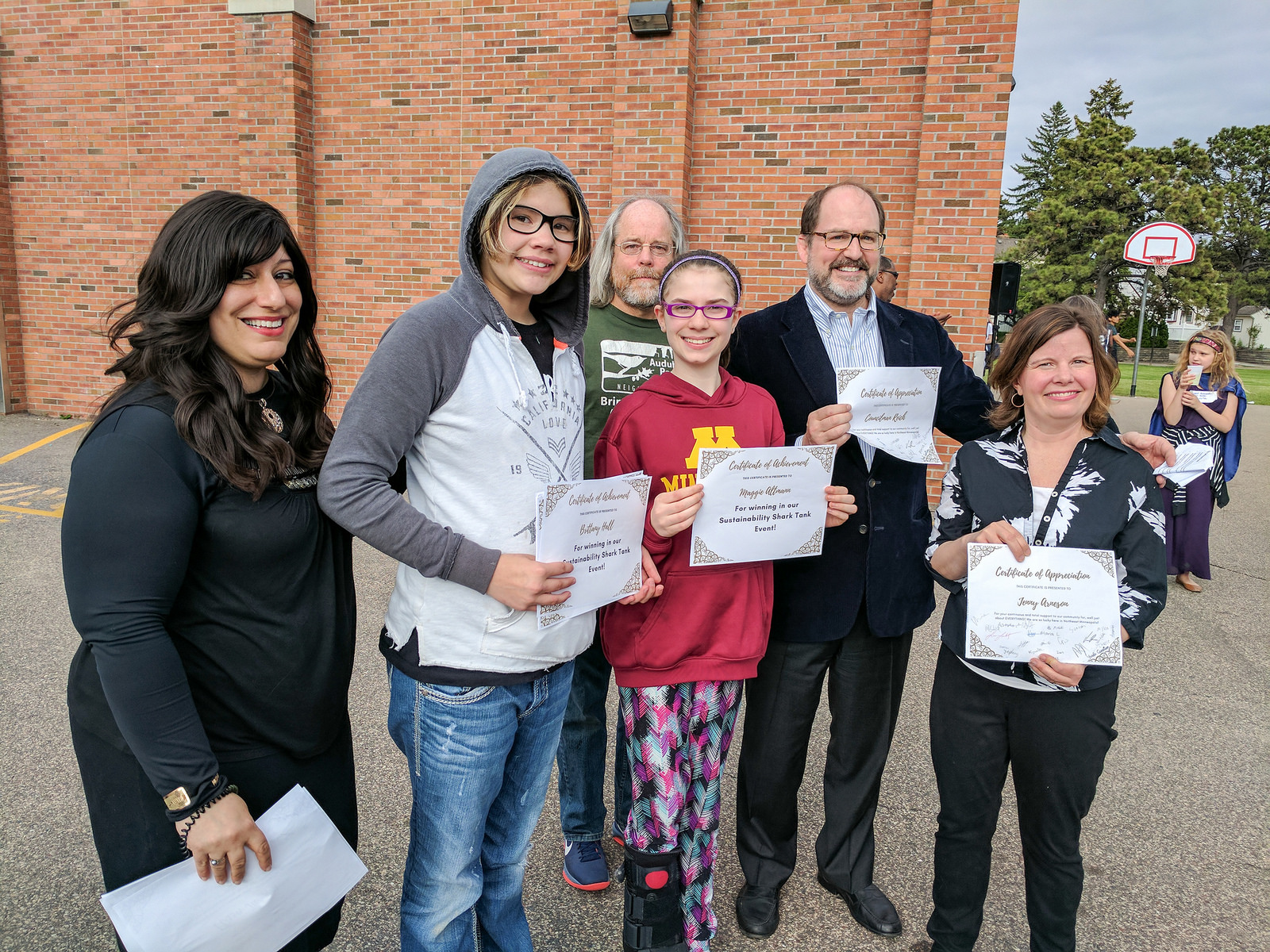
It has been inspiring over the last several years to watch communities in Northeast Minneapolis work with local schools to turn their campuses into environmental learning laboratories. Last year’s Edison High School Green Campus project was followed this year by a similarly inspiring project at Northeast Middle School.
The Audubon Neighborhood Association led an effort to transform a portion of the school’s oversized parking lot into a rain garden. Science teacher Yosefa Carriger and Principal Vernon Rowe brought the project into the classroom with help from engineers at Civil Site Group, who involved 10th-grade students in the design of the rain garden. Wetland Habitat Restorations (now Landbridge Ecological)— the team behind the signage at Edison — likewise involved Carriger’s students in the design of the interpretive signage installed at the school.
Mississippi River Green Team
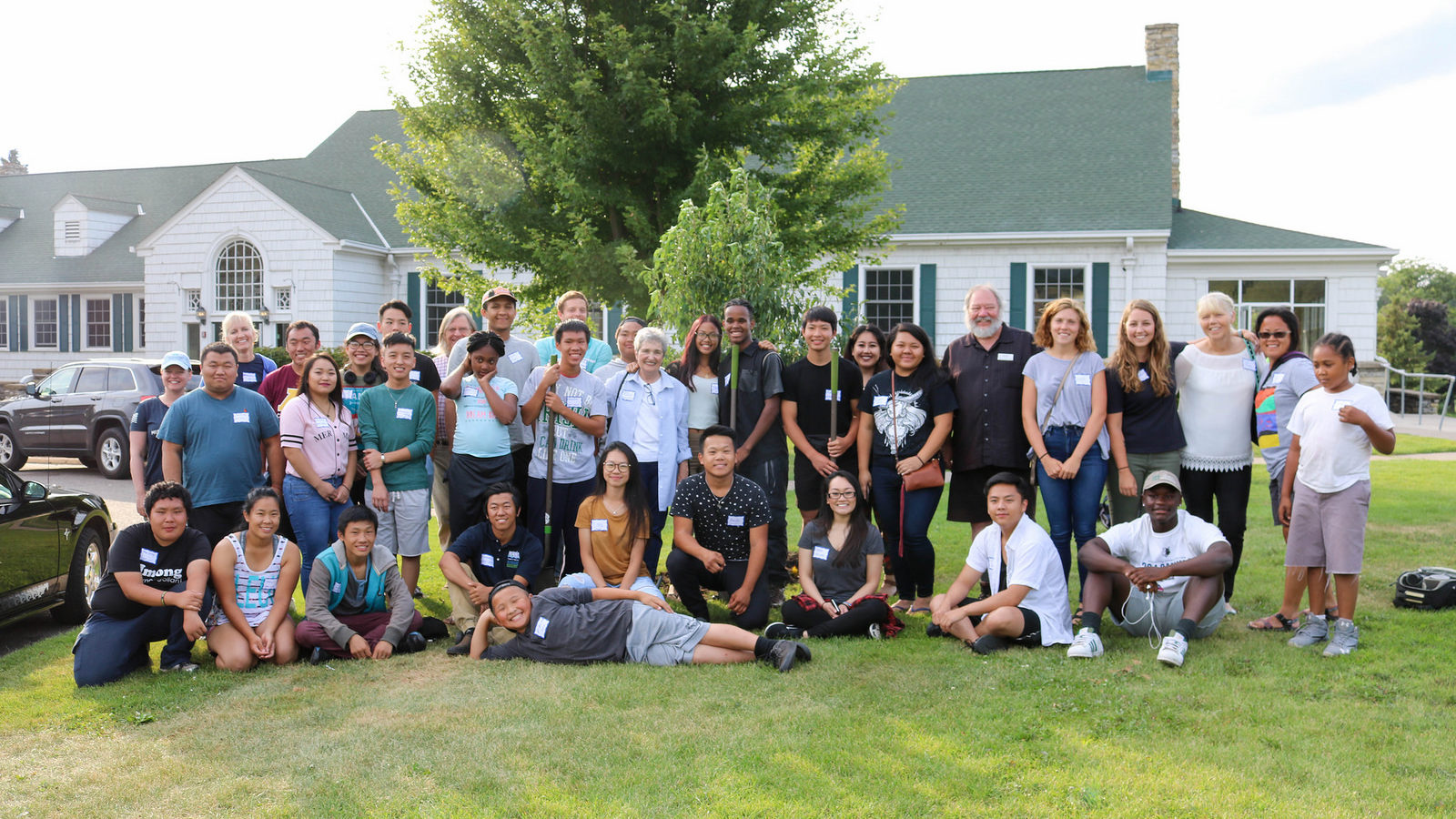
This year marked the 10th anniversary of the Mississippi River Green Team. More than 100 Minneapolis teens have now completed this urban conservation and employment program founded by the MWMO and the Minneapolis Park and Recreation Board. You can see a few of their stories on our website. We held a 10th anniversary reunion event this summer and it was great to see so many youth have been positively impacted by this unique program.
This year, we also hired our first Mississippi River Green Team intern — Yengsoua Lee, an MRGT graduate who spent the summer learning on the job from the MWMO, Friends of the Mississippi River, the City of Fridley, the City of Minneapolis, and others. We’re grateful to our partners for helping us give Yengsoua a variety of work experience, and hope to continue the internship program next year.
A Few Scenes from 2017
Finally, we’ll leave you with a few of our other favorite scenes from 2017:
